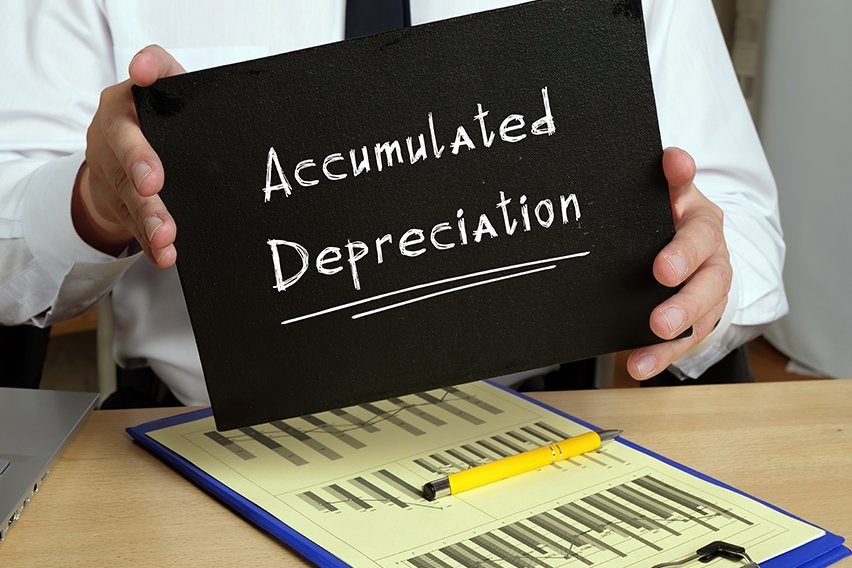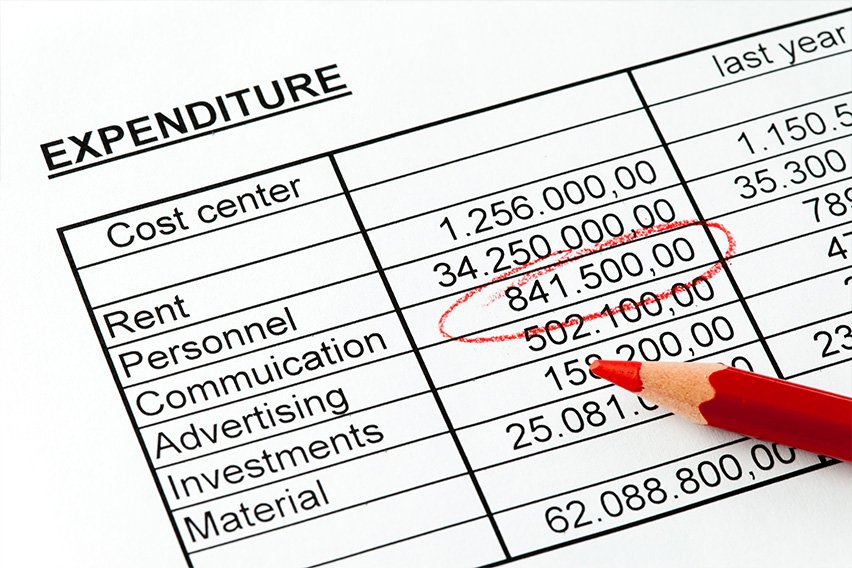What Is Accumulated Depreciation?

The cumulative depreciation of an asset up to a single point in its life is called accumulated depreciation. The carrying value of an asset on a balance sheet is the difference between its purchase price and accumulated depreciation. A business buys and holds an asset on the balance sheet until the salvage value matches the carrying value.
Accumulated depreciation is applicable to assets that are capitalized. Capitalized assets are assets that provide value for more than one year. Accounting rules dictate that expenses and sales are matched in the period in which they are incurred. Depreciation is a solution for this matching problem for capitalized assets. A portion of the cost of the asset in the year it is purchased and for the rest of the asset’s useful life is considered a depreciation expense.
Accumulated depreciation is the total amount that the asset has been depreciated over the asset’s life.
This article also discusses:
Is Accumulated Depreciation an Expense?
How to Calculate Monthly Accumulated Depreciation?
NOTE: FreshBooks Support team members are not certified income tax or accounting professionals and cannot provide advice in these areas, outside of supporting questions about FreshBooks. If you need income tax advice please contact an accountant in your area.
Is Accumulated Depreciation an Expense?
Accumulated depreciation is the total depreciation for a fixed asset that is assigned as an expense since the asset was obtained and made available for use. Accumulated depreciation accounts are asset accounts with a credit balance (known as a contra asset account). It appears on the balance sheet as a reduction from the gross amount of fixed assets reported.
Depreciation expense accounts are debited each year, expensing a portion of the asset for that year. The accumulated depreciation account is credited for the same amount. Accumulated depreciation increases over the years as depreciation expenses are charged against the value of fixed assets.
When an asset is sold or retired, the total associated amount of the asset is reversed, completely removing the record of the asset from a business’ financial books.

How to Calculate Monthly Accumulated Depreciation?
Depreciation can be calculated on a monthly basis in two different ways.
Determining monthly accumulated depreciation for an asset depends on the asset’s useful lifespan as defined by the IRS, as well as which accounting method you use.
The useful lifespan of an asset can range from three to 20 years for personal property, 15 to 20 years for land improvements, and are fixed at 27.5 years for residential real estate and 39 years for business real estate. The IRS has information about the depreciation and lifespan of assets.
The IRS currently uses the Modified Accelerated Cost Recovery System (MARCS) is the depreciation system that allows depreciation to be calculated by either the straight-line method or the declining balance method.
Straight-line method
To do the straight-line method, you choose to depreciate your property at an equal amount for each year over its useful lifespan.
Use the following steps to calculate monthly straight-line depreciation:
- Subtract the asset’s salvage value from its cost to determine the amount that can be depreciated
- Divide this amount by the number of years in the asset’s useful lifespan
- Divide by 12 to tell you the monthly depreciation for the asset

Declining Balance Method
This method is used to recognize the majority of an asset’s depreciation early in its lifespan. There are two variations of this: the double-declining balance method and the 150% declining balance method.
The depreciation amount changes from year to year using either of these methods, so it more complicated to calculate than the straight-line method.
For the double declining balance method, the following formula is used to calculate each year’s depreciation amount:
To convert this from annual to monthly depreciation, divide this result by 12.
RELATED ARTICLES

 A Simple Guide to Small Business Write Offs
A Simple Guide to Small Business Write Offs How to Become a Small Business Owner in 7 Steps
How to Become a Small Business Owner in 7 Steps How to Choose the Best Accounting Software for Your Small Business?
How to Choose the Best Accounting Software for Your Small Business? Specific Identification Accounting 101
Specific Identification Accounting 101 What Is an Acid Test Ratio?
What Is an Acid Test Ratio? 12 Poor Accounting Practices That Will Damage Your Business
12 Poor Accounting Practices That Will Damage Your Business